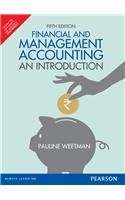Shell uses a number of key performance indicators to evaluate the overall performance of Shell from a
Question:
Shell uses a number of key performance indicators to evaluate the overall performance of Shell from a financial, efficiency, social and sustainable development perspective and collectively they represent the Shell scorecard.
In addition, Shell monitors and manages the businesses by means of detailed parameters.
The scorecard highlights four key performance indicators which together provide a summarised overview of Shell’s performance.
These are measured on a quarterly and annual basis. As explained on page 86 in the Directors’ Remuneration Report, the scorecard is also used to determine remuneration for staff, senior management and executive directors.
Total shareholder return (25% scorecard weighting)
Total shareholder return (TSR) is measured as the sum of the difference between the share price at the start of the year and the share price at the end of the year, plus the cash value of dividends paid during the calendar year (gross and reinvested quarterly). The TSR is compared against other major integrated oil companies and provides therefore a benchmark of how Shell is performing against its industry peers.
Net cash from operating activities (25% scorecard weighting)
Net cash from operating activities is a measure that reflects Shell’s ability to generate cash for investment and distributions to shareholders. The Consolidated Statement of Cash Flows on page 117 shows the components of cash flow. The net cash from operating activities for scorecard purposes is adjusted for taxes paid on divestments.
Operational excellence (30% scorecard weighting)
Within each of the different businesses, operational performance is measured by means of detailed parameters that are combined into a business dashboard. The four key operational indicators for the businesses are production for exploration and production and oil sands, LNG sales for gas and power, refinery availability for oil products and technical plant availability for chemicals (both corrected for uncontrollable incidents such as hurricanes). In 2008 the measure for Oil Products was changed from ‘unplanned downtime’ to refinery availability to provide focus on two critical areas namely turnaround management and reliability.
Sustainable development (20% scorecard weighting)
As well as measuring financial performance and efficiency, Shell uses various indicators to evaluate Shell’s contribution to sustainable development. This Report discusses on pages 64–68 the priorities with regards to staff and environmental data such as greenhouse gas emissions, use of flaring and energy use in its businesses and assets. Safety remains a key topic for Shell and is measured by the number of injuries and fatal accidents, as discussed on page 69. The main metric for assessing our performance in the area of sustainable development is total recordable case frequency (TRCF). See page 69 for further discussion of TRCF.
Discussion points
1 What is the mix of financial and non-financial performance measures mentioned in this extract?
2 How easy would it be to measure the performance of an individual against these targets?
Step by Step Answer:

Financial And Management Accounting An Introduction
ISBN: 9789332511200
5th Edition
Authors: Pauline Weetman





